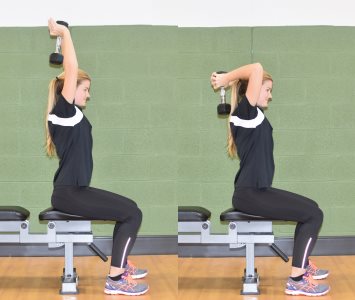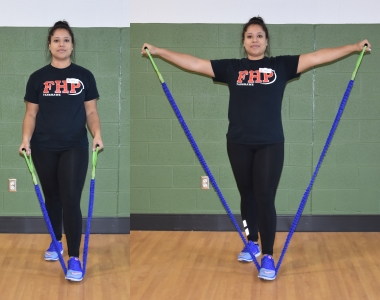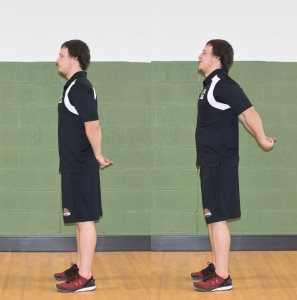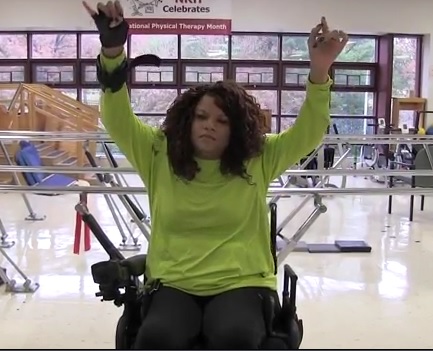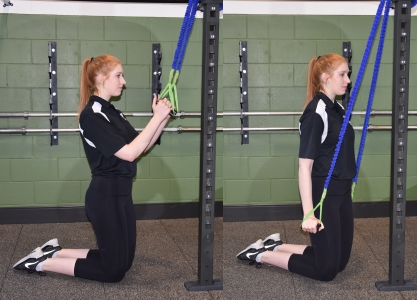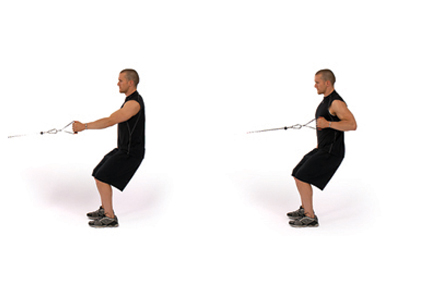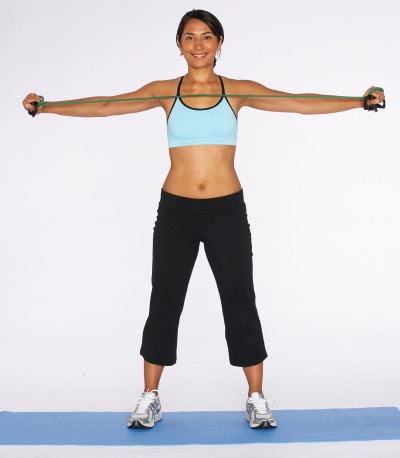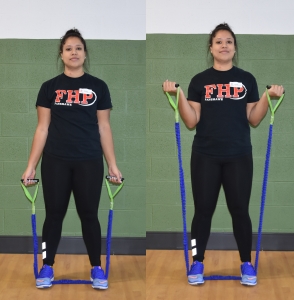Review and practice the general TRX skills outlined below.
General rules for using TRX:
- keep core engaged
- maintain good posture
- keep straps tight
- no sawing strap
- move hands higher to prevent straps rubbing on arms.
General rules for making TRX exercises harder and easier:
- The steeper your body angle, the greater the resistance for the exercise (move feet toward anchor = more resistance = harder; move feet away from anchor = less resistance = easier)
- Decreasing your base of support challenges your ability to stabilize and requires more core engagement (stagger step is easier than wide straight stance; wide straight stance is easier than narrow straight stance; narrow straight stance is easier than one leg stance)
- For ground-based exercises (i.e., leg curls), moving body so feet are on far side of pendulum makes it easier, moving it so feet are on near side of pendulum makes it harder.
S<strong>etting up the TRX system</strong><strong>:</strong>
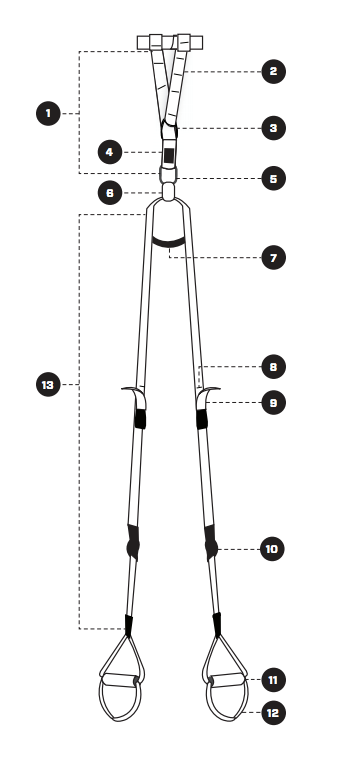
- The anchor point should be 7-10 feet (top of #1 on picture)
- Equalizer loop point 6 feet (#6 on picture)
- Yellow tab (change of colour) is mid-point on the straps (#8 on picture)
- When straps are fully lengthened, the foot straps should be 3 inches off of the ground (#12 on picture)
<strong>Shortening the TRX Straps</strong><strong>:</strong>

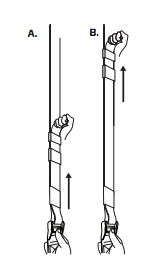
- Hold one strap of the TRX, depress the cam buckle (#10) with your thumb and grasp the yellow adjustment tab (#9) with the other hand
- Simultaneously draw backward on the buckle and push the adjustment tab up along the strap
Repeat on other side
<strong>Lengthening the TRX Straps</strong><strong>:</strong>

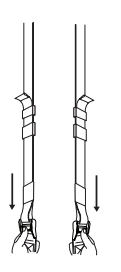
- Simultaneously depress both buckles (#10) and pull downward, away from anchor point
<strong>Setting up the Single Strap design</strong><strong>:</strong>
- Hold handle A on top of handle B
- Pass handle B through the triangle-shaped webbing of hand A. Switch hands.
- Repeat by passing hand A through the triangle-shaped webbing of handle B. Switch hands.
- Pull handle A toward you to lock.

<strong>Helping the client get feet-in strap design for plank:</strong>
 Lie on back with knees to chest.
Lie on back with knees to chest.- Put straps around toes with the hard handle (#11) on the bottom of the feet.
- Roll from your back to your front with knees to chest.
- Your feet do not need to rotate in the straps because you want the hard handle to the bottom of your feet.
After reviewing and practising all of these skills, mark this task as complete, and move to the next task.

